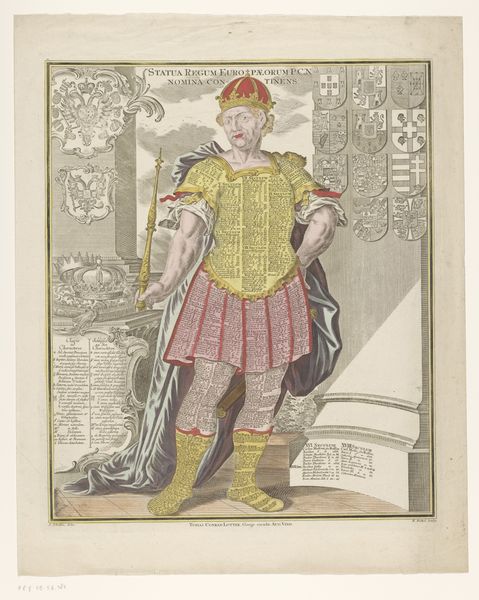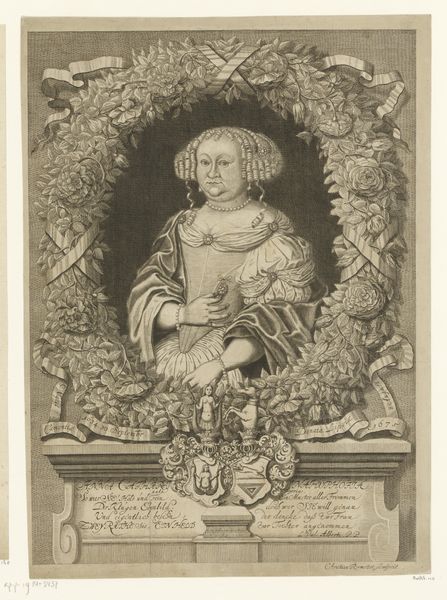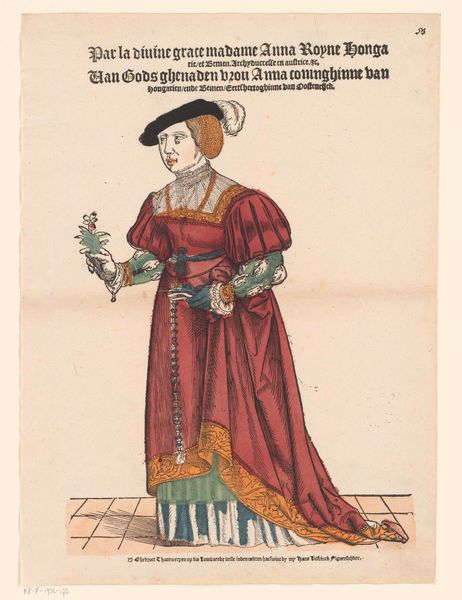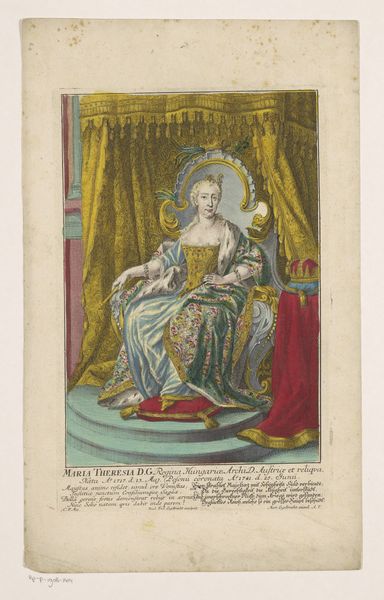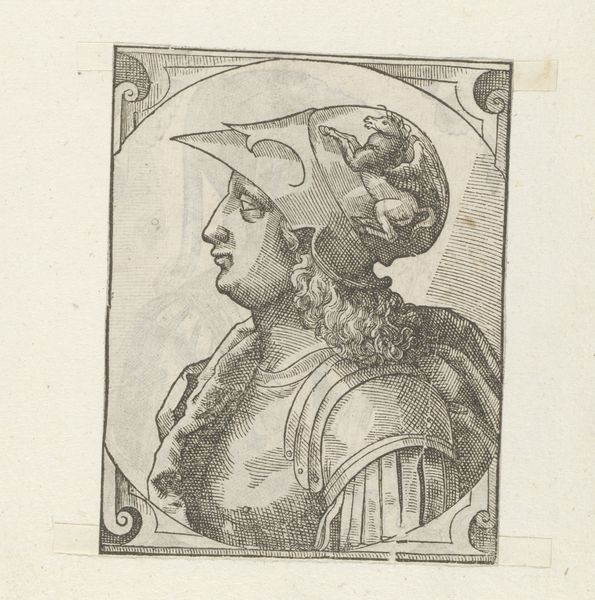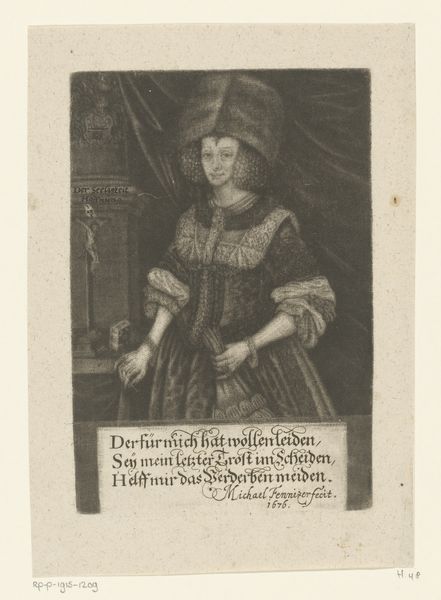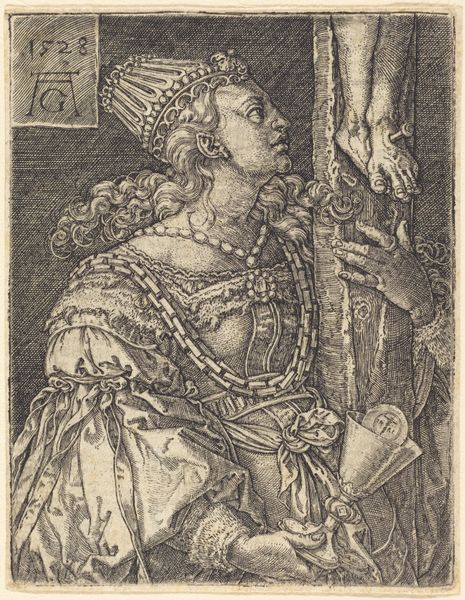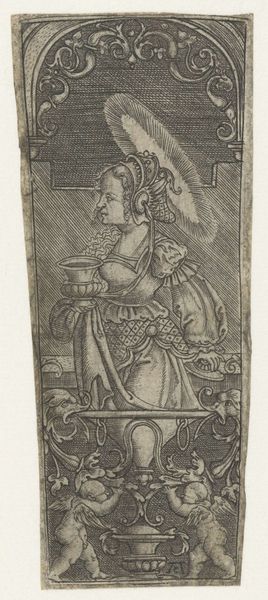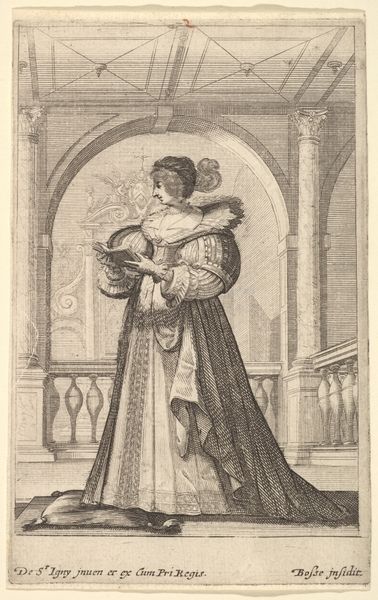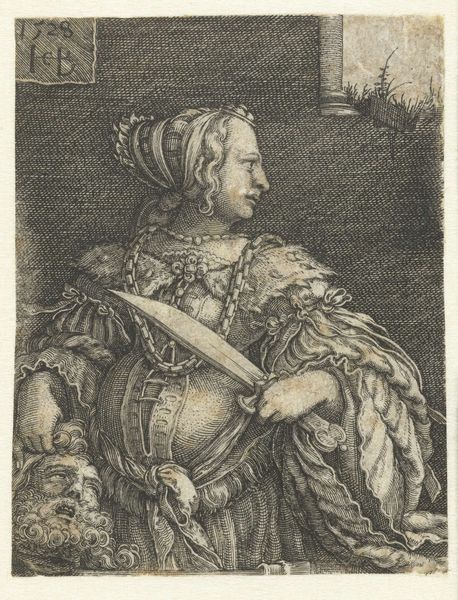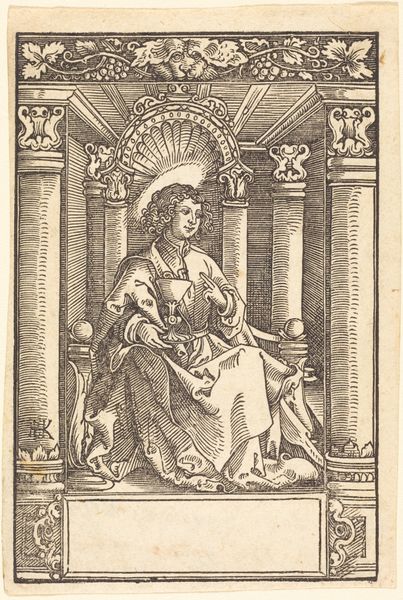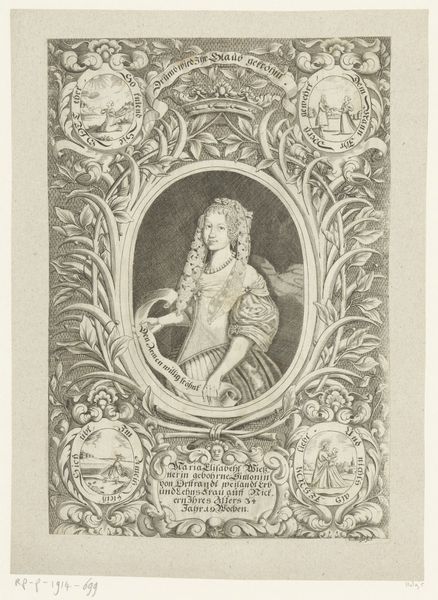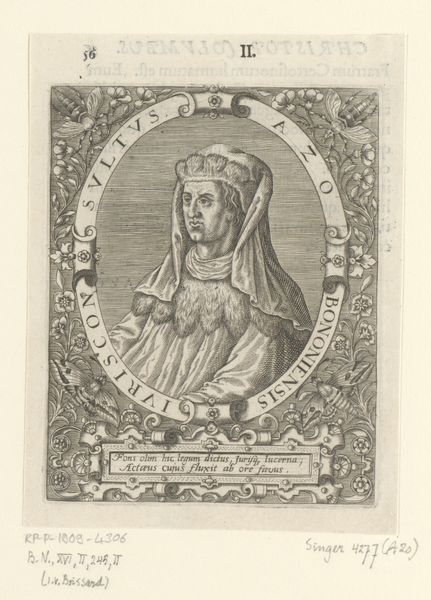
drawing, print, paper, engraving
#
portrait
#
drawing
# print
#
mannerism
#
paper
#
engraving
Dimensions: height 344 mm, width 234 mm, height 404 mm, width 279 mm
Copyright: Rijks Museum: Open Domain
Pieter Coecke van Aelst made this print, "Portrait of Eleonora of France," using woodcut and color in the mid-16th century. The formal setting of the portrait, combined with heraldic symbols, points to the importance of noble lineage and the construction of dynastic power in the 16th century. This colored print demonstrates how the Netherlandish workshops used reproductive technologies to amplify the prestige and power of the European aristocracy, using visual codes related to nobility and empire. The print was produced in Antwerp, a center of artistic and commercial exchange. The inscriptions in Latin and Dutch reflect the complex cultural landscape of the Netherlands under the Habsburgs. Artists like Coecke van Aelst found themselves negotiating between local traditions, the demands of the court, and the expanding market for art. Historians of art and culture can use sources, such as guild records and family papers, to understand the social and institutional conditions under which such works were produced and consumed. The study of prints such as this gives us insight into the history of art, as something closely tied to economics and political power.
Comments
No comments
Be the first to comment and join the conversation on the ultimate creative platform.
